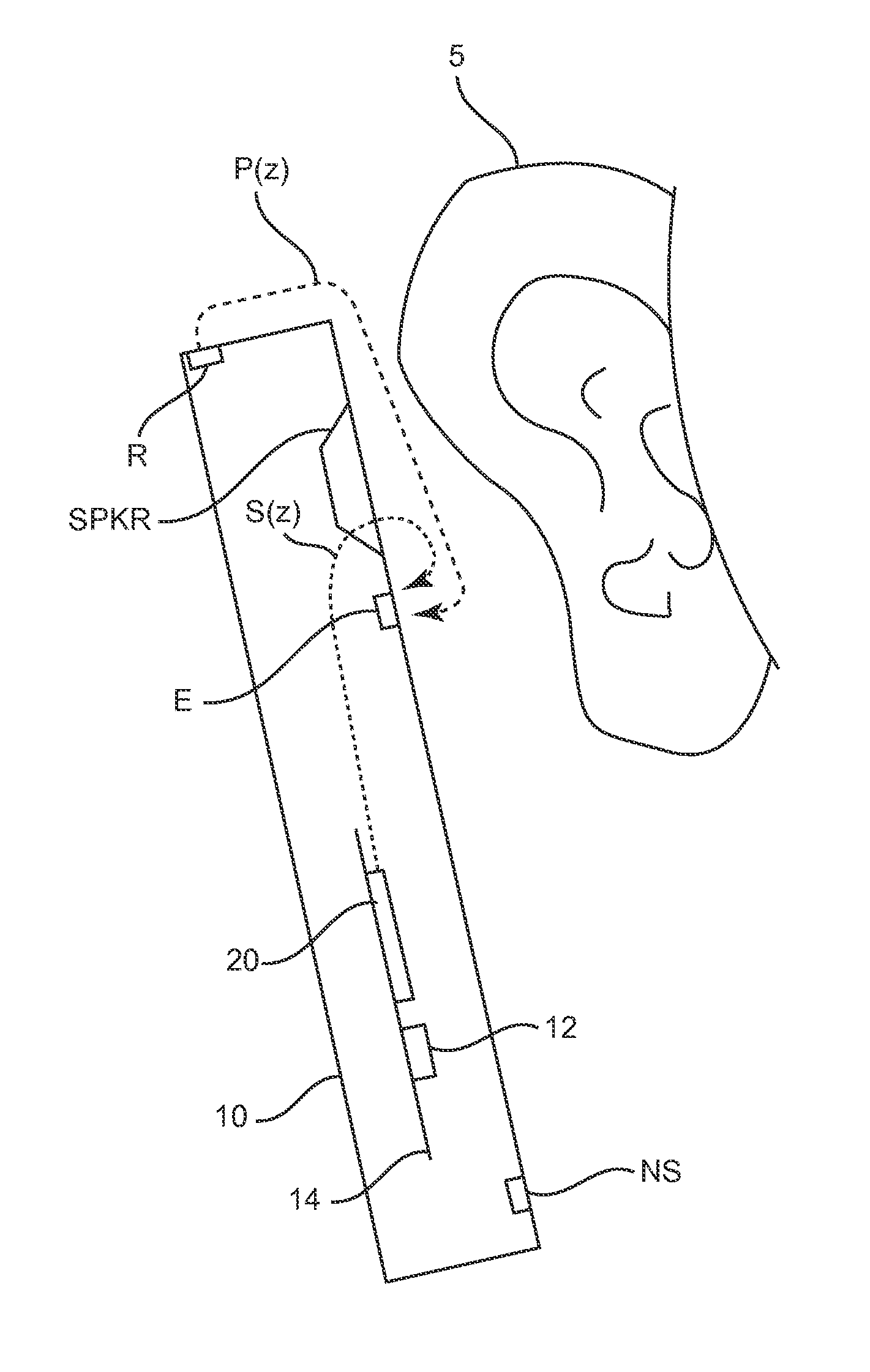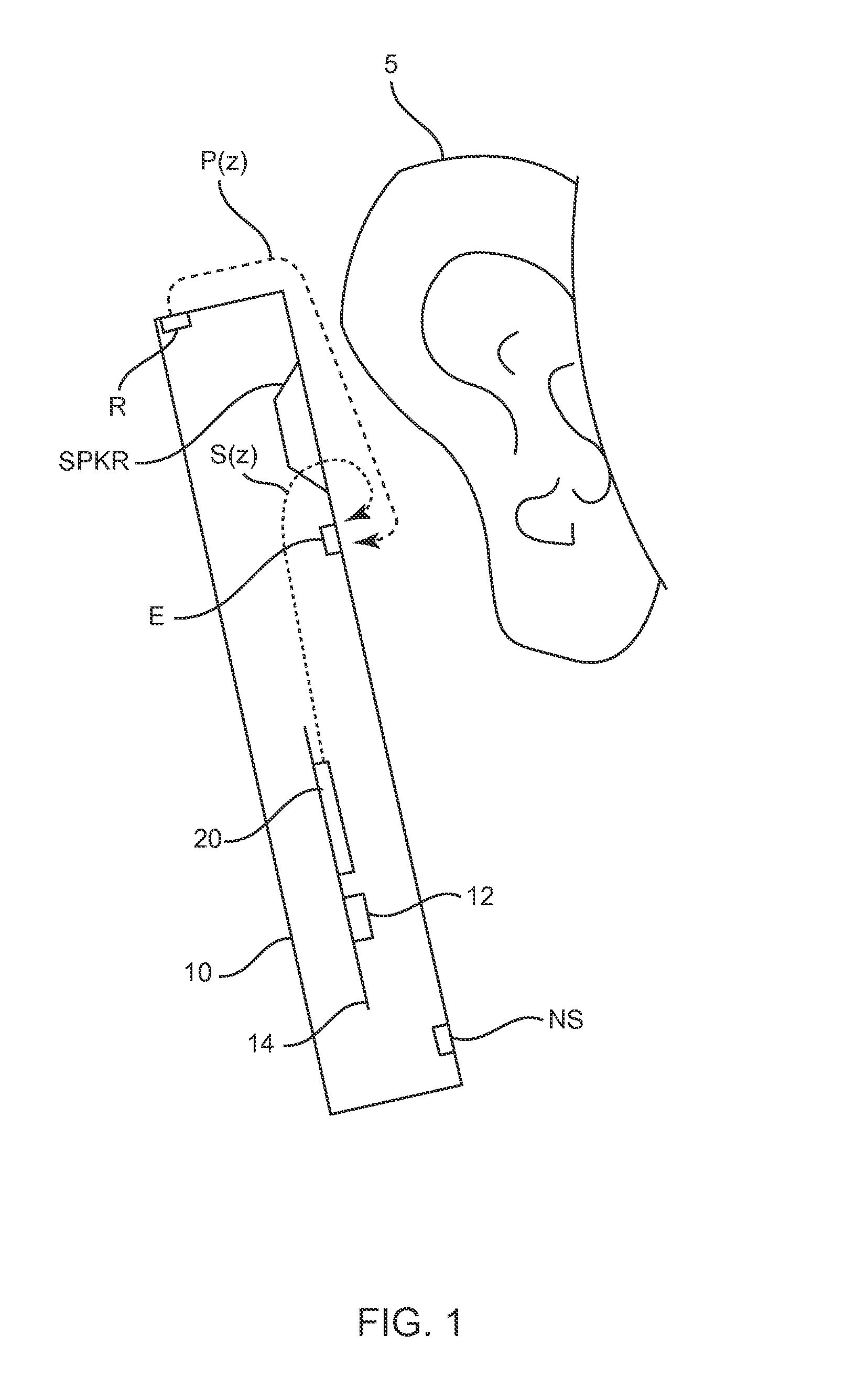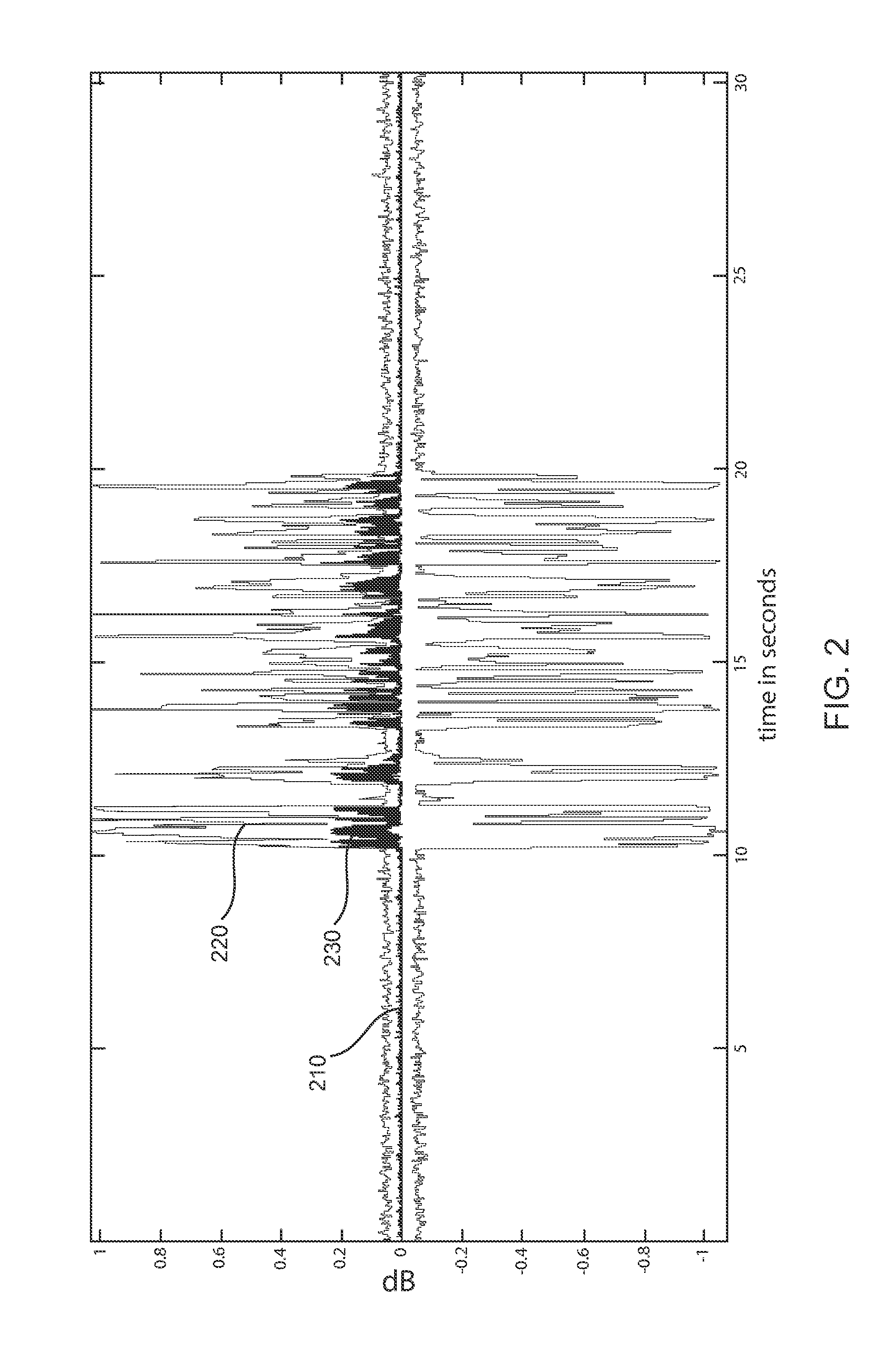Ambient noise root mean square (RMS) detector
- Summary
- Abstract
- Description
- Claims
- Application Information
AI Technical Summary
Benefits of technology
Problems solved by technology
Method used
Image
Examples
Embodiment Construction
[0029]The present ambient noise RMS detector improves upon the techniques of prior art rms detectors such as taught by Martin and Cohen by using an improved algorithm in the RMS detector. FIG. 3 is a block diagram of the present ambient noise RMS detector. Referring to FIG. 3, a raw rms value is calculated from the input signal using known prior art techniques. Blocks 110, 120, and 130 are elements of a first-order regressor with a variable smoothing factor. The input signal, which in this instance may be a background noise signal with speech, is fed to block 110 where the absolute value of the signal is taken. This absolute value signal in turn is fed to low-pass-filter 120 and then to downsampler 130. The net effect is to output a raw rms value such as described above in connection with Equation (1). As these first three elements of the block diagram are known in the art, they will not be described in further detail.
[0030]Both the Martin and Cohen methods and designs discussed abo...
PUM
 Login to View More
Login to View More Abstract
Description
Claims
Application Information
 Login to View More
Login to View More - R&D
- Intellectual Property
- Life Sciences
- Materials
- Tech Scout
- Unparalleled Data Quality
- Higher Quality Content
- 60% Fewer Hallucinations
Browse by: Latest US Patents, China's latest patents, Technical Efficacy Thesaurus, Application Domain, Technology Topic, Popular Technical Reports.
© 2025 PatSnap. All rights reserved.Legal|Privacy policy|Modern Slavery Act Transparency Statement|Sitemap|About US| Contact US: help@patsnap.com



